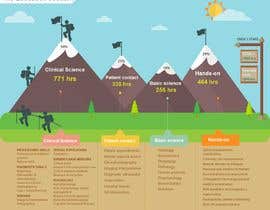Be Prepared To Decipher The Appealing Cellular Interactions Involved In Cold Laser Therapy And Its Usage Of Light For The Function Of Recovery. Engage On Your Own Better Into The World Of Scientific Research!
Be Prepared To Decipher The Appealing Cellular Interactions Involved In Cold Laser Therapy And Its Usage Of Light For The Function Of Recovery. Engage On Your Own Better Into The World Of Scientific Research!
Blog Article
Content Develop By-Castro Peters
You may have become aware of cold laser treatment as an appealing therapy choice for numerous problems, yet have you ever asked yourself how it really deals with a mobile level? Recognizing https://daltonyrjbu.59bloggers.com/28281453/familiarize-yourself-with-the-advantages-of-cold-laser-treatment-in-2024 behind this treatment can shed light on its effectiveness in advertising recovery and lowering inflammation. By discovering the scientific research behind cold laser treatment, you'll gain understandings right into the interesting methods which light can affect cellular procedures and assist in cells repair.
How Cold Laser Treatment Functions
To recognize how cold laser treatment works, you need to comprehend the essential concepts of just how light power engages with organic cells. visit this hyperlink , additionally called low-level laser treatment (LLLT), uses specific wavelengths of light to pass through the skin and target underlying cells. Unlike the extreme lasers made use of in procedures, cold lasers give off reduced levels of light that do not create heat or create damages to the cells.
When these mild light waves get to the cells, they're soaked up by components called chromophores, such as cytochrome c oxidase in mitochondria. This absorption triggers a collection of organic actions, including increased mobile energy manufacturing and the launch of nitric oxide, which enhances blood circulation and reduces inflammation.
In addition, the light energy can also boost the production of adenosine triphosphate (ATP), the energy money of cells, aiding in cellular repair work and regeneration processes.
Basically, cold laser therapy uses the power of light power to advertise healing and ease discomfort in a non-invasive and gentle fashion.
Devices of Action
Just how does cold laser therapy in fact function to create its restorative results on organic tissues?
Cold laser treatment, likewise called low-level laser therapy (LLLT), operates with a procedure called photobiomodulation. When the cold laser is applied to the skin, the light energy passes through the cells and is absorbed by chromophores within the cells.
These chromophores, such as cytochrome c oxidase in the mitochondria, are then stimulated by the light energy, causing a cascade of organic responses. One crucial system of activity is the improvement of cellular metabolism.
The taken in light power raises ATP manufacturing in the mitochondria, which is essential for mobile feature and repair service. Furthermore, cold laser treatment helps to minimize inflammation by hindering inflammatory arbitrators and promoting the release of anti-inflammatory cytokines.
This anti-inflammatory effect adds to discomfort alleviation and cells healing.
Restorative Impacts
Recognizing the therapeutic impacts of cold laser treatment entails acknowledging exactly how the improved mobile metabolism and anti-inflammatory properties add to its favorable results on organic tissues.
When the cold laser is applied to the damaged location, it stimulates the mitochondria within the cells, resulting in enhanced production of adenosine triphosphate (ATP), which is important for mobile function and repair service. https://www.ucihealth.org/news/2021/05/new-laser-can-pulverize-kidney-stones in mobile power increases the recovery procedure by promoting cells regrowth and minimizing inflammation.
In addition, the anti-inflammatory residential properties of cold laser treatment help to reduce pain and swelling in the targeted location. By inhibiting inflammatory mediators and promoting the release of anti-inflammatory cytokines, cold laser treatment aids in alleviating pain and boosting the general recovery response.
This decrease in inflammation not just supplies immediate alleviation however also sustains lasting cells fixing.
Final thought
Finally, cold laser treatment functions by stimulating cellular repair work and tissue regeneration with photobiomodulation. Its anti-inflammatory properties provide discomfort alleviation and minimize swelling by preventing inflammatory moderators.
This treatment offers an extensive method to recovery, delivering both prompt relief and long-term cells repair benefits.
Via its mechanisms of activity, cold laser therapy confirms to be a reliable and promising treatment choice for a selection of problems.
